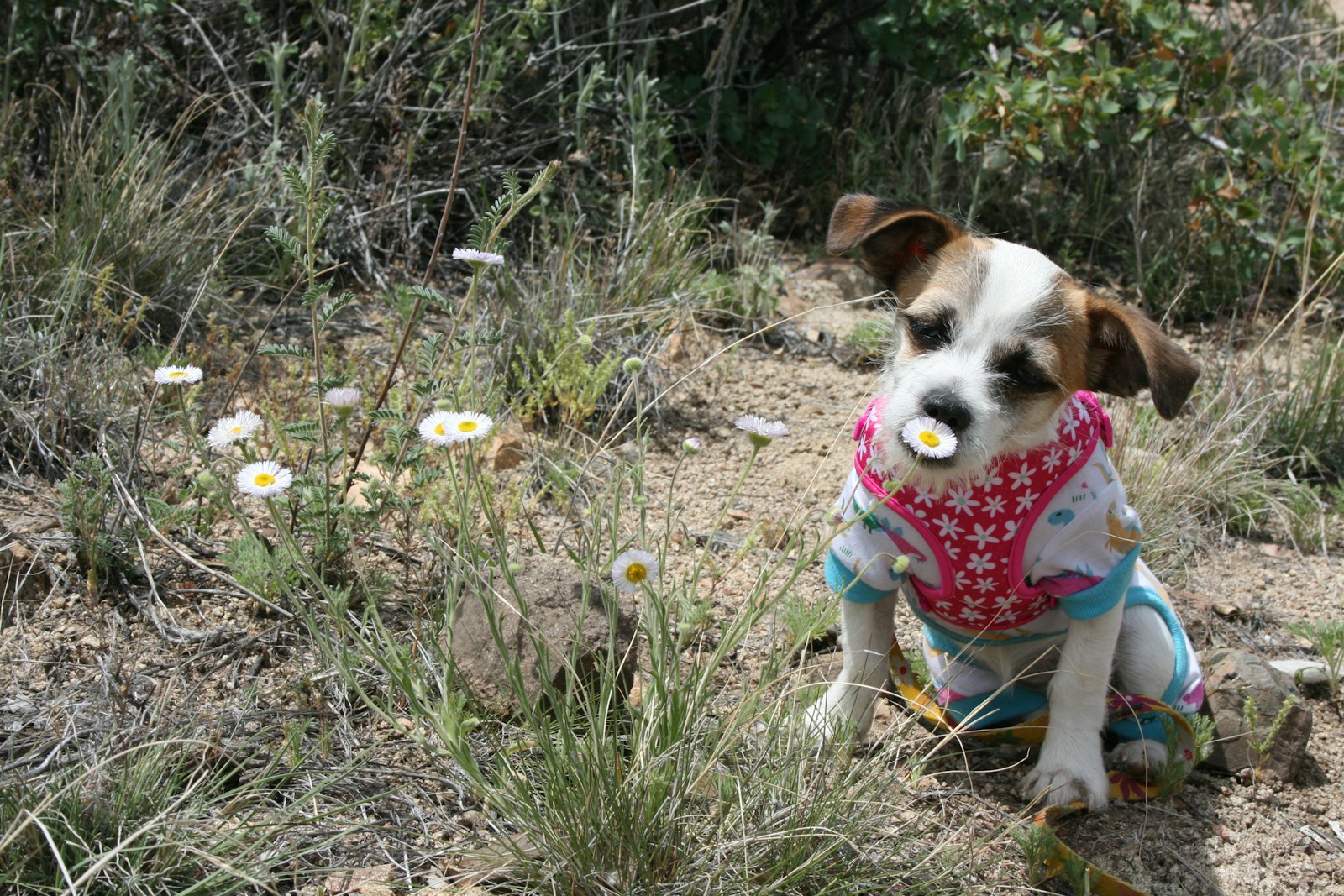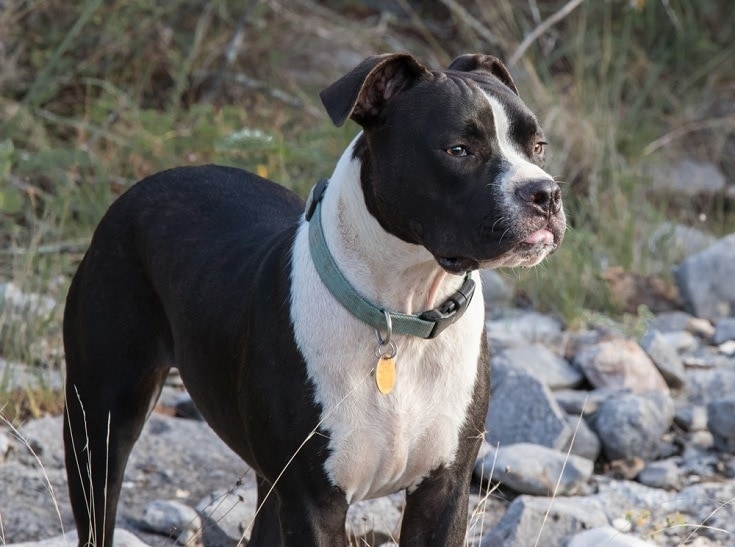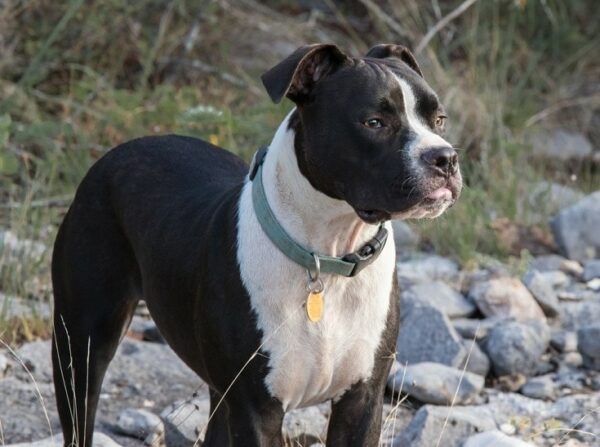Click Below to Skip Ahead
Are you thinking of adding a dog to your home and considering the Valley Bulldog? If so, you’re in for a world of fun. These delightfully clownish canines love to play, are friendly with everyone they come across, and are quite affectionate, making them an excellent addition to any household. Adopting a dog means knowing how to properly care for them, though.
If you’re unsure what is involved with caring for a Valley Bulldog, we have you covered. We’ve put together a detailed guide to this breed, so you know exactly what you’re getting into by adopting one of these pups. Read on for everything you need to know!
Breed Overview
Height:
12–25 inches
Weight:
50–125 pounds
Lifespan:
10–12 years
Colors:
Brindle, fawn, tan, red, and white
Suitable for:
Families with older kids, moderately active people
Temperament:
Sweet, affectionate, playful
The Valley Bulldog is a designer dog created from the Boxer and the Bulldog (although the breed might have been around naturally before people started breeding them). As such, they’ve inherited a wonderful mix of traits from their parent breeds, making the Valley Bulldog a charming canine companion!
Valley Bulldog Characteristics

Valley Bulldog Puppies

Chances are good you’ll need to go through a reputable breeder to adopt a Valley Bulldog. There’s a small possibility of finding one in a shelter, but most likely, you’ll need a breeder. Because this breed has been bred for 10 to 15 generations, you can now adopt what is considered a purebred Valley Bulldog!
Once you’ve adopted your puppy, you’re in for some fun. These canines are sweet and affectionate; they adore attention and are friendly with almost everyone they meet. They can be a bit hyperactive during puppyhood (though they should calm down after they turn one year old), so be prepared for that! This breed can also be fairly vocal, so you may want to begin training them not to bark so much sooner rather than later.
Valley Bulldog Origin & History
The Valley Bulldog, as we know it today, originated in the Annapolis Valley in Nova Scotia in the mid-1900s (which is how the name “Valley Bulldog” came about). However, it’s believed this breed was likely naturally around before that. Breeders only began specifically developing this hybrid breed in the mid-1900s, though.
The parent breeds of the Valley Bulldog are the Boxer and the Bulldog. These breeds were bred together to combine the athleticism and temperament of the Boxer with the courageousness of the Bulldog. Developed as a durable working canine, this breed was used mostly for ranch and farm work. Not only would the Valley Bulldog herd livestock, but they would also guard the ranch or farm from predators.
Temperament & Intelligence of the Valley Bulldog 🧠
Adopt a Valley Bulldog, and you’ll have a clown on your hands! Many owners of this breed describe these pups as boisterous and silly. That silliness will become a bit less as they age, though, as these dogs become calmer as they get older. These dogs are also incredibly sweet, friendly, and affectionate, so they’ll love everyone in the family. Though only moderately intelligent, these pups are still smart. You’ll find they’re relatively active, as well, so they’ll need plenty of playtime to keep them occupied.
Because this is a hybrid breed, though, temperaments can vary by dog. What sort of temperament a Valley Bulldog has depends greatly on which parent breed they take after more, so there’s a bit of variety within the breed. You may find yourself with a pup who is calmer or one who is sillier than you expect!
Are These Dogs Good for Families? 🏡
The Valley Bulldog will do wonderfully with children. Because they’re so affectionate and silly, they and any kids in the house will have an excellent time together. However, this dog is better for those with older children.
While this breed isn’t aggressive at all, they can be easily excitable, and because of their size, they can knock over little ones. They’ll have more difficulty doing that with older kids, though. Also, remember that any children in the home should be taught how to respectfully interact with a dog and how to be careful of a dog’s boundaries. Always keep an eye on children and dogs playing together in case of accidents.
Does This Breed Get Along With Other Pets? 🐶 😽
This breed can get along well with other dogs and might get along with felines. They aren’t typically territorial, and their prey drive isn’t exceptionally high (though they do have one, so they may chase after smaller animals). Raising a Valley Bulldog from puppyhood with other dogs or cats is the best way to get them to be friendly and sociable and ensure a happy household.

Things to Know When Owning a Valley Bulldog:
What else should you know about the Valley Bulldog before adopting one? How to care for one, of course! Before adopting any animal, you should know as much as possible about what food they need, how to groom them, etc. Here’s a look at all that and more for this breed.
Food & Diet Requirements 🦴
Unless your Valley Bulldog has a food allergy (which can occasionally happen), they shouldn’t have any special dietary requirements. So, your dog will just need a food that is formulated for medium-sized breeds who are moderately active. These pups aren’t at all picky (in fact, they tend to eat almost anything), so you shouldn’t have issues finding a food they like.
This breed can be prone to becoming overweight because of their love of food, though, so be careful how much you feed them each day. Your vet can advise you on how much food your pup should have, including when that amount should increase or decrease as they grow. Be careful with treats for these pups, too!
Exercise 🐕
Because the Valley Bulldog is a moderately active breed, they will require about an hour of exercise and play a day. That said, these dogs also tend to tire quickly, so any exercise you do, such as walks, should be on the shorter side. Because this breed’s snout is shorter, they can sometimes have trouble getting enough airflow during exercise, which might cause some heavier breathing. If your Valley Bulldog is still hyper throughout the day, even after exercising, they probably need a bit more activity. Exercise needs can vary by dog, depending on which parent breed they resemble more.
The Valley Bulldog is incredibly athletic due to its parentage, though, so the breed will love going on a couple of walks a day and running around a large, enclosed space like a yard. Playtime will be important to these pups, so be sure to have a variety of toys on hand (extra durable toys, as this breed can chew through most things due to their strong jaws!).
Training 🦮
This breed should be fairly easy to train, as they’re smart, eager to please, and love food. They usually pick up on new things rather quickly, especially if there are tasty treats to reward them once they do. However, these pups can sometimes lose their focus due to their excitability, so they may get caught up in something and not listen to commands being given.
You may want to invest in obedience or puppy training classes because of this tendency to sometimes lose focus and their hyperactive nature. These canines need to be trained from a very young age; otherwise, they might easily get out of hand once they’re older and bigger. Plus, classes let them socialize with other dogs, which is vital.
A couple of particular areas you’ll want to work on with your Valley Bulldog are barking and chewing. These pups can be rather barky at times and love to chew on things. You’ll want to begin discouraging these behaviors early on.
Grooming ✂️
Grooming a Valley Bulldog is fairly simple. This breed has a short coat, so you only need to brush them out once a week to get rid of loose hair. They also don’t need to be bathed often, mostly just when they get dirty. However, if your pup has a lot of folds on their face or body, you should make sure those are kept clean so no infection occurs. A quick wipe-down with some pet wipes or a towel should suffice.
The only other grooming maintenance these dogs should need will be having their teeth brushed and nails trimmed regularly.
Health and Conditions ❤️
This is a reasonably healthy dog breed. They aren’t prone to many health issues at all. However, there is always a possibility that a Valley Bulldog could develop a condition that one of their parent breeds is prone to, depending on how much they take after that breed.
- Allergies
- Skin Conditions
- Brachycephalic syndrome
- Hip dysplasia
Male vs Female
Males of this breed will be a bit larger than females, but other than that, there shouldn’t be any significant differences between the sexes. Neither females nor males should be aggressive, and when it comes to personality, both should be affectionate and sweet.
3 Little-Known Facts About the Valley Bulldog
1. One particular thing makes them extra drooly.
What is that one thing? Tasty treats! When the Valley Bulldog smells something delicious, their salivary glands will produce much more saliva than usual.
2. This breed isn’t great at swimming.
Due to their short legs and stocky build, this breed isn’t made for swimming, so you may want to leave that activity off the list of preferred ways to exercise.
3. The Valley Bulldog also goes by another name.
You might also hear these dogs referred to as Bull-Boxers!

Final Thoughts
If you’re looking for an absolutely adorable, incredibly sweet, and wonderfully affectionate canine companion, look no further than the Valley Bulldog! This cuddly breed makes a fantastic pet for families with older kids and those who are moderately active. They have huge, clown-like personalities and love to play, so they add plenty of fun to a home. You do need to watch out for their tendency to bark, though, and their potential for chewing on things. Luckily, this breed is pretty easy to train, so you can start working on negating those behaviors early on.
See also:
- Why Do Dogs Chase Their Tails? 9 Vet-Reviewed Causes
- Thanksgiving Foods for Dogs: Vet-Reviewed Safe & Toxic Meals
Featured Image Credit: Deude Mann, Shutterstock







